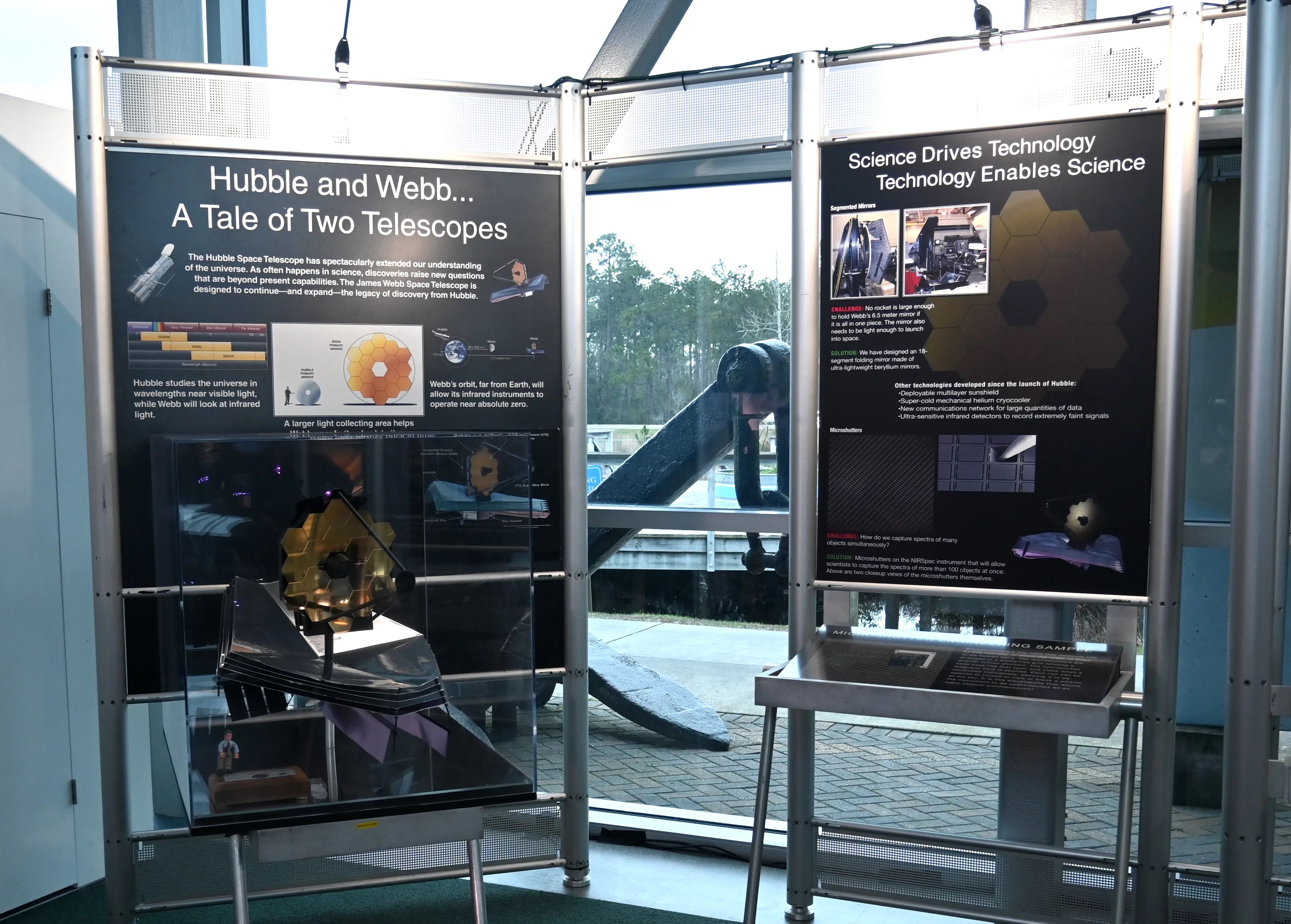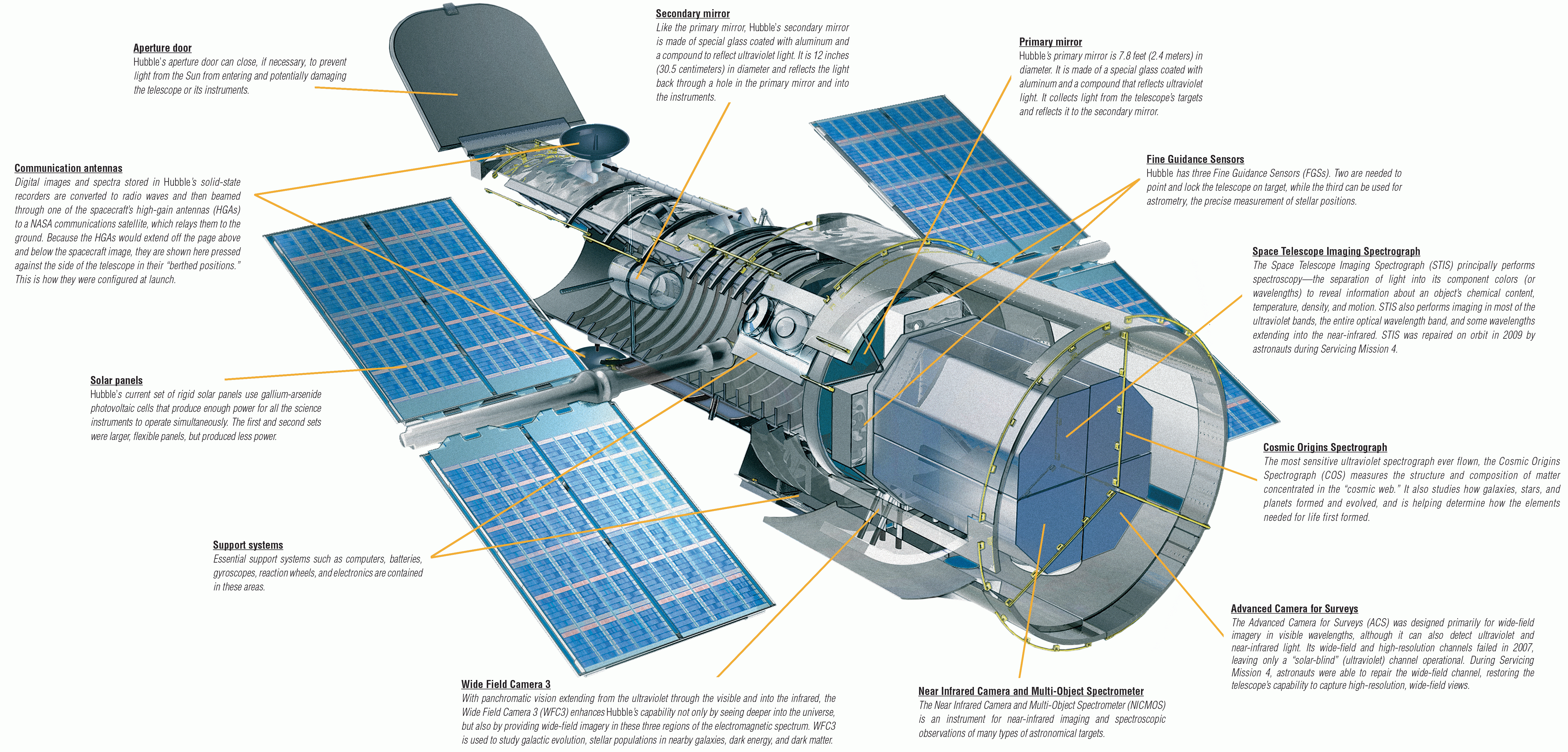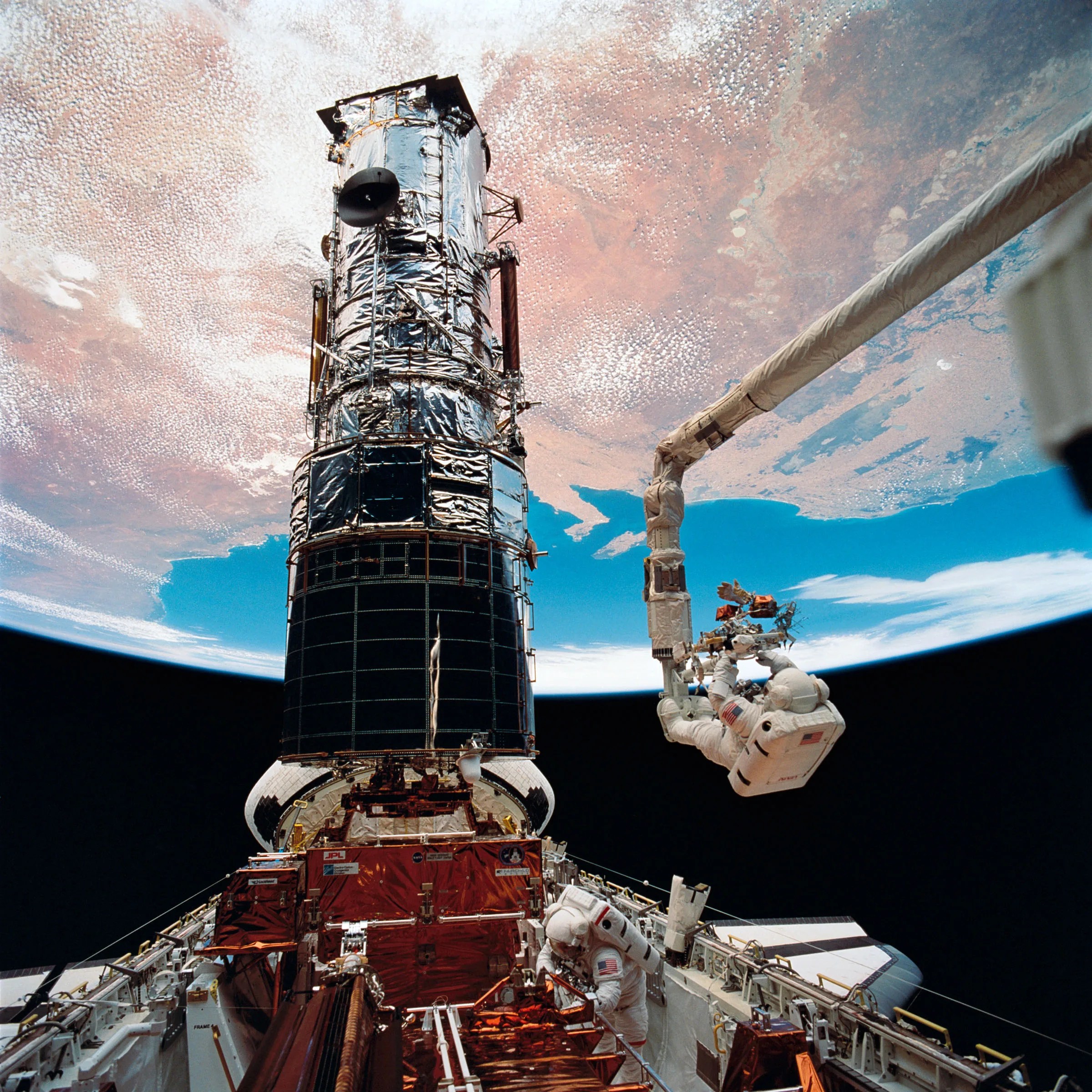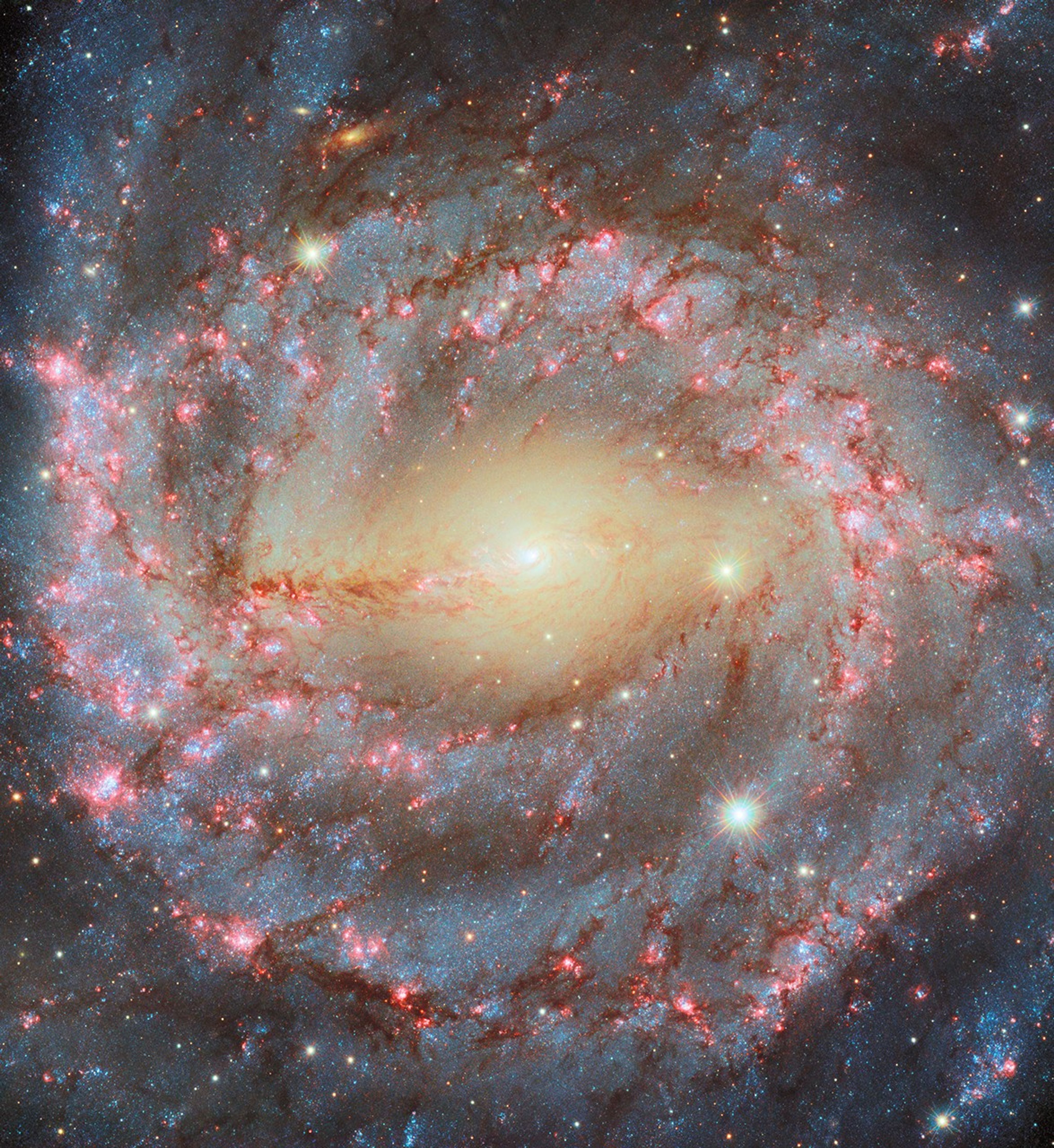Hubble Space Telescope: New Views of the Universe is divided into twelve fascinating sections that highlight different aspects of the orbiting observatory, including aspects of satellite itself, its many discoveries, or what Hubble's future may hold. The stations include an introductory panel that welcomes viewers and provides an overview of Hubble, a tunnel that highlights some of Hubble’s best images, a station on the spacecraft’s equipment and servicing missions, a 3D "science on a sphere" display, and various exhibits highlighting Hubble’s contributions to the study of planets, stars, galaxies, and the universe. The stations also hold numerous interactive kiosks that allow visitors to learn and explore Hubble's systems and science. These kiosks include: how Hubble gets its power, why Hubble is thermally insulated, see your hands in different wavelengths of light, and explore the night sky for Hubble images. The exhibit also features a station on the James Webb Space Telescope and some of its initial images.
Station List
Station 1
Introductory Panel
The introductory panel welcomes visitors to the exhibit and briefs them on the Hubble satellite, the questions it seeks to answer, and the questions that the exhibit may answer for them. The panel endorses the original partnership between NASA, the Smithsonian Institution, and the Space Telescope Science Institute that made this exhibit possible. After a warm welcome and knowledge of what they should be looking for, visitors are now prepared to immerse themselves in the mysteries and wonders of the exhibit.
Back to Station List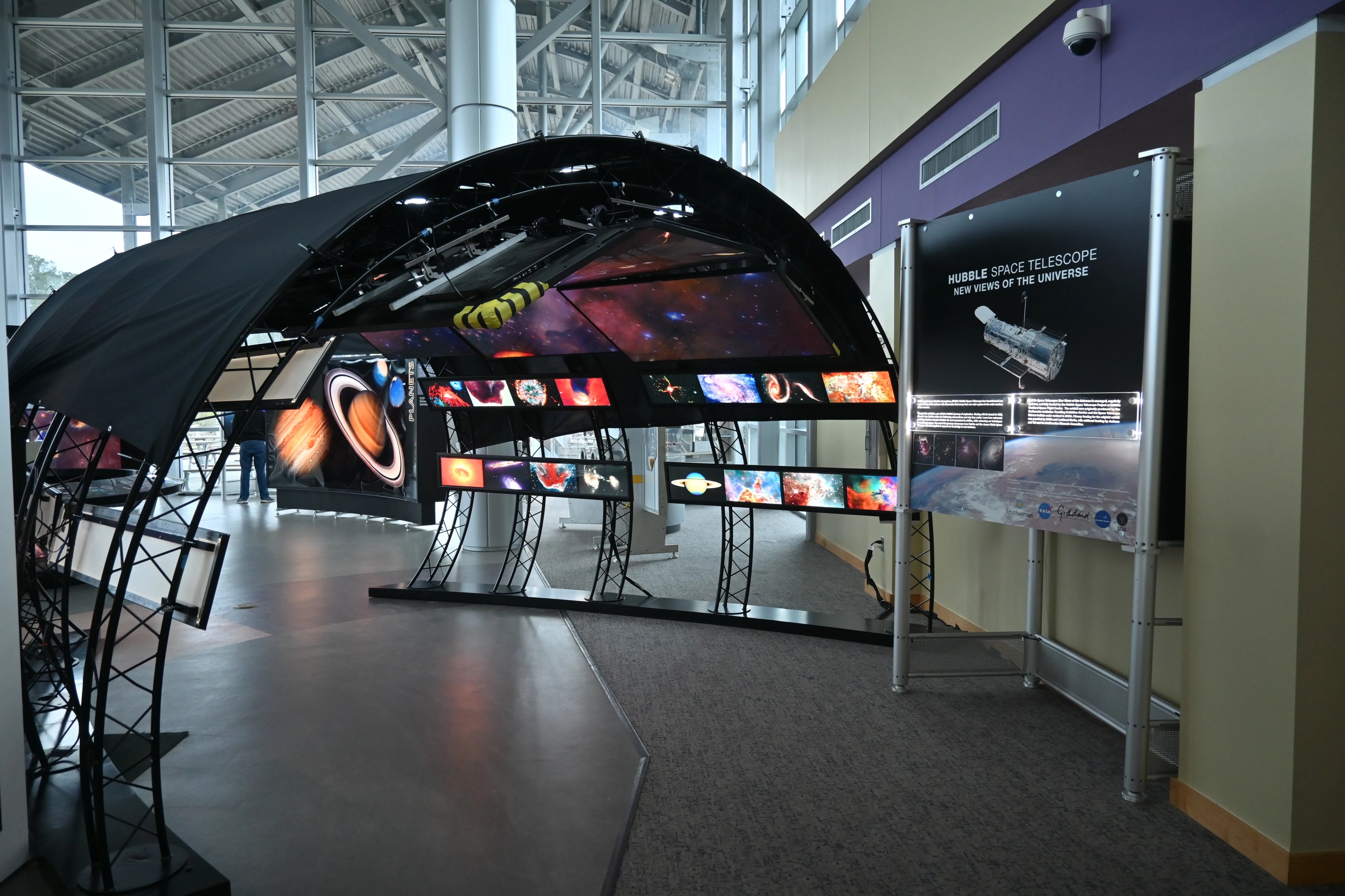
Station 2
The Tunnel
The Tunnel is a path that surrounds and immerses visitors in a series of images from some of Hubble’s most fascinating discoveries. Wherever you look, there is an image captured by the telescope during its more than three decades of operation. When visitors look above, a video wall takes them through stunning images of the cosmos.
Back to Station List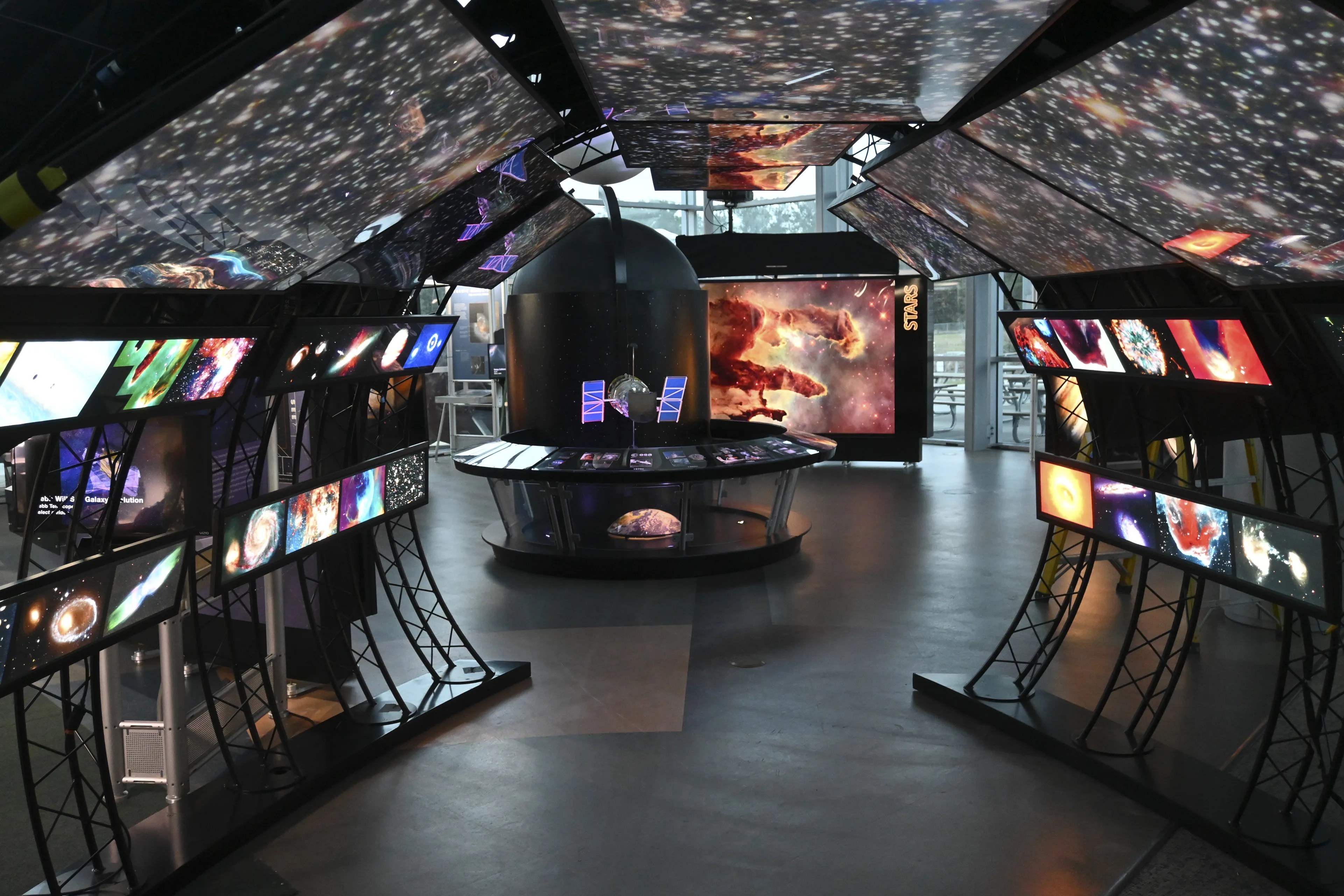
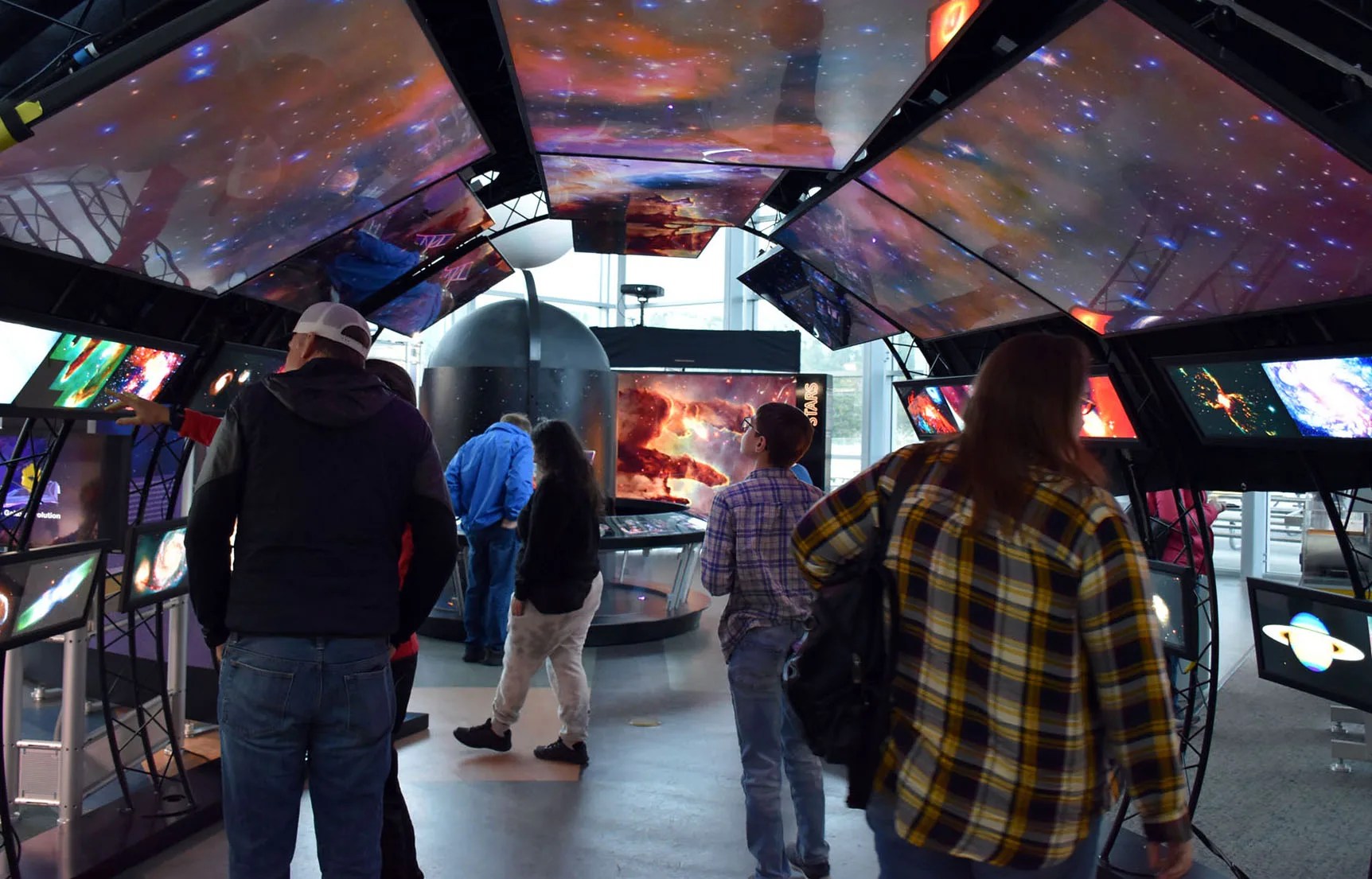
Station 3
Centerpiece with Model
A 1:15 model of the Hubble Space Telescope is the central focus of the exhibit. It offers visitors a visual representation of the telescope as it is in space. The ring surrounding the model provides insight into the size, operations, and history of the telescope. Behind the model, the station provides a three-step explanation of why Hubble is above the atmosphere and what makes it different from ground-based observatories. A Science on a Sphere is also attached to the top of the station and provides a pictorial information on Hubble's orbit, its communications, and more.
Back to Station List
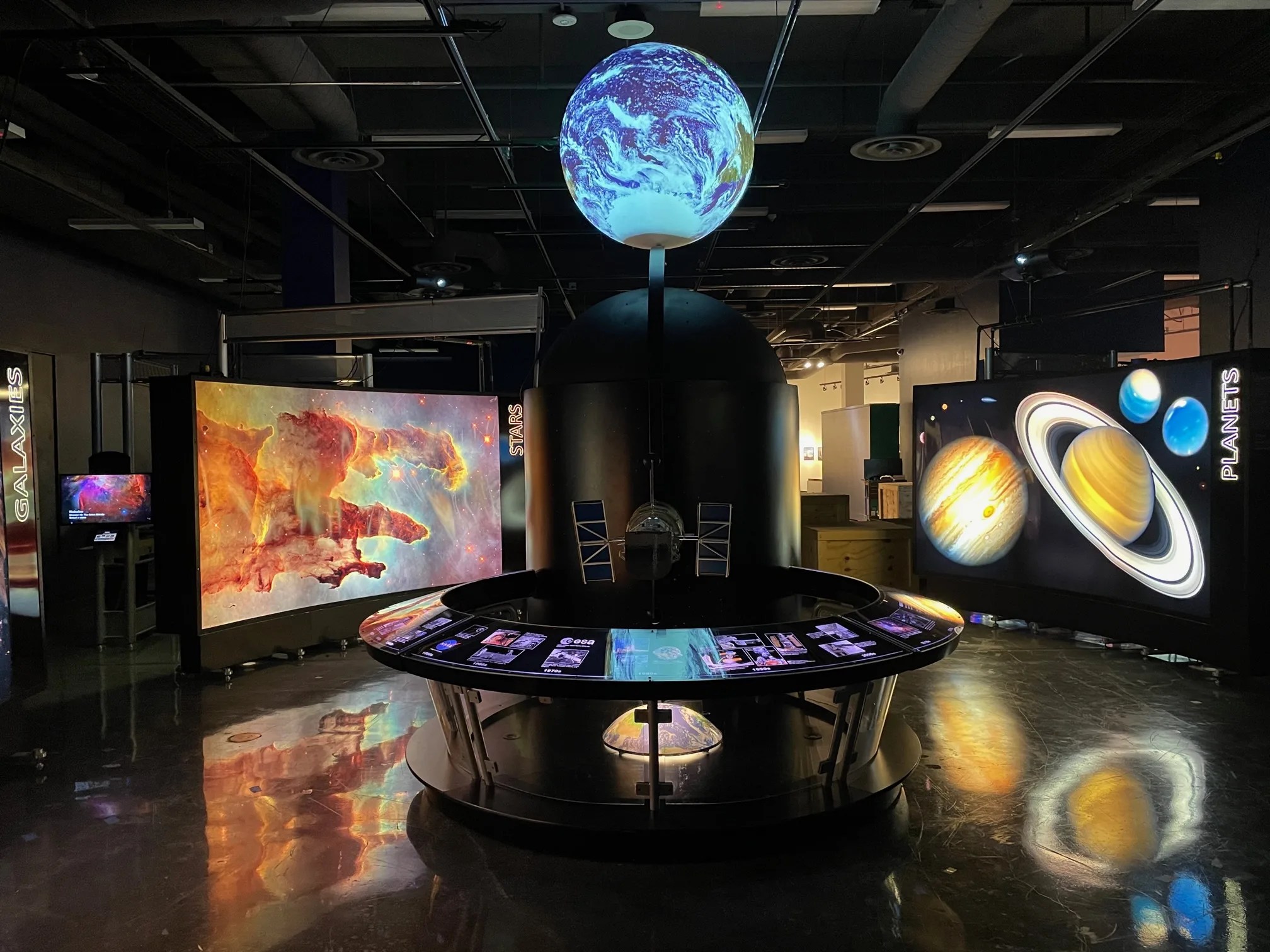
Station 4
Planets
The Planets station of the traveling exhibit details some of Hubble’s most significant contributions to the observation of planets in our solar system and beyond. Hubble tackles the question of where these planets came from and how they formed. The telescope can watch these planets and how they change over time, answering important questions on their histories and their origin. It can see storms as they sweep across Mars, a comet as it strikes Jupiter, or volcanic eruptions on Jupiter’s moon Io. The solar system is alive with change, and Hubble is watching.
Back to Station List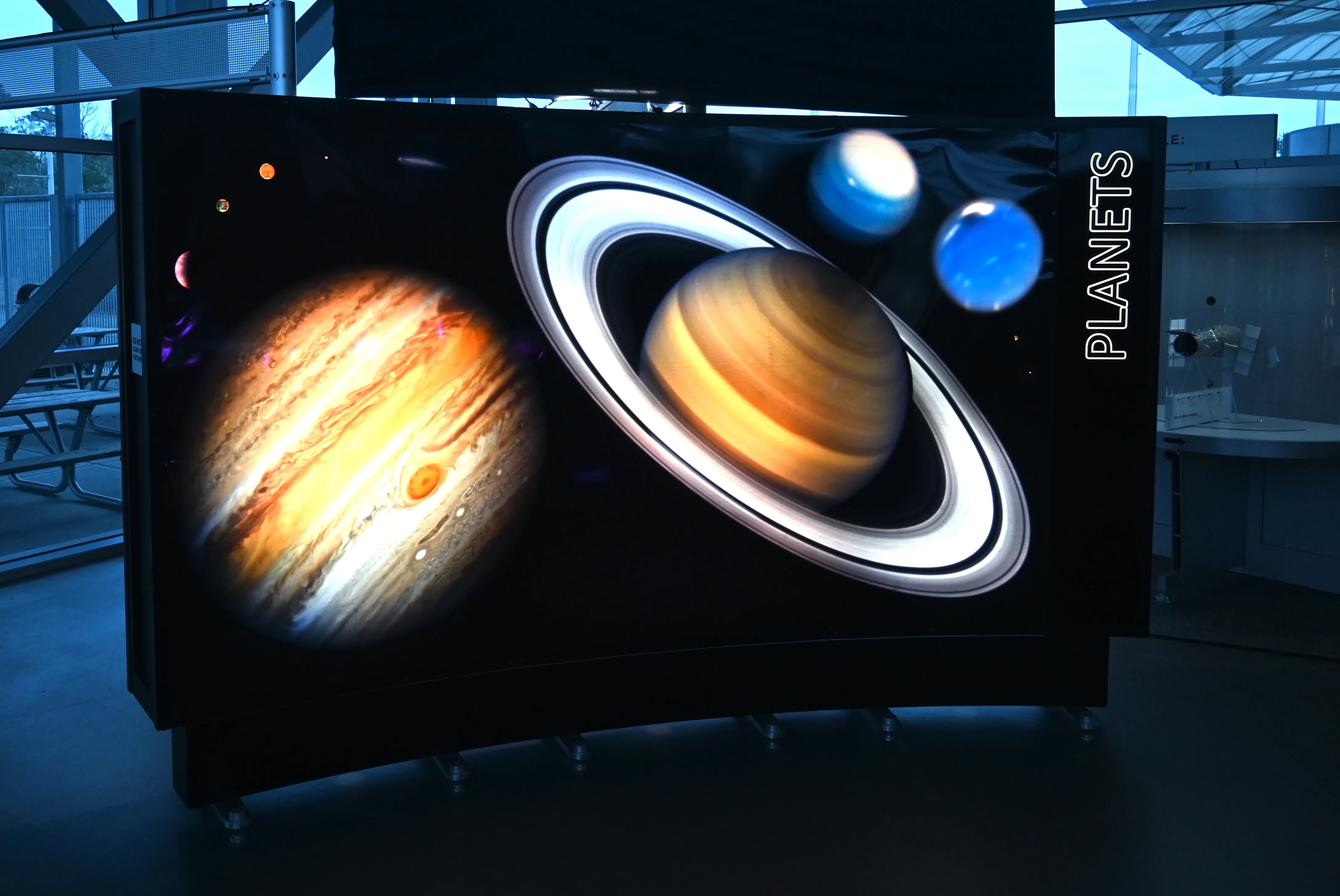
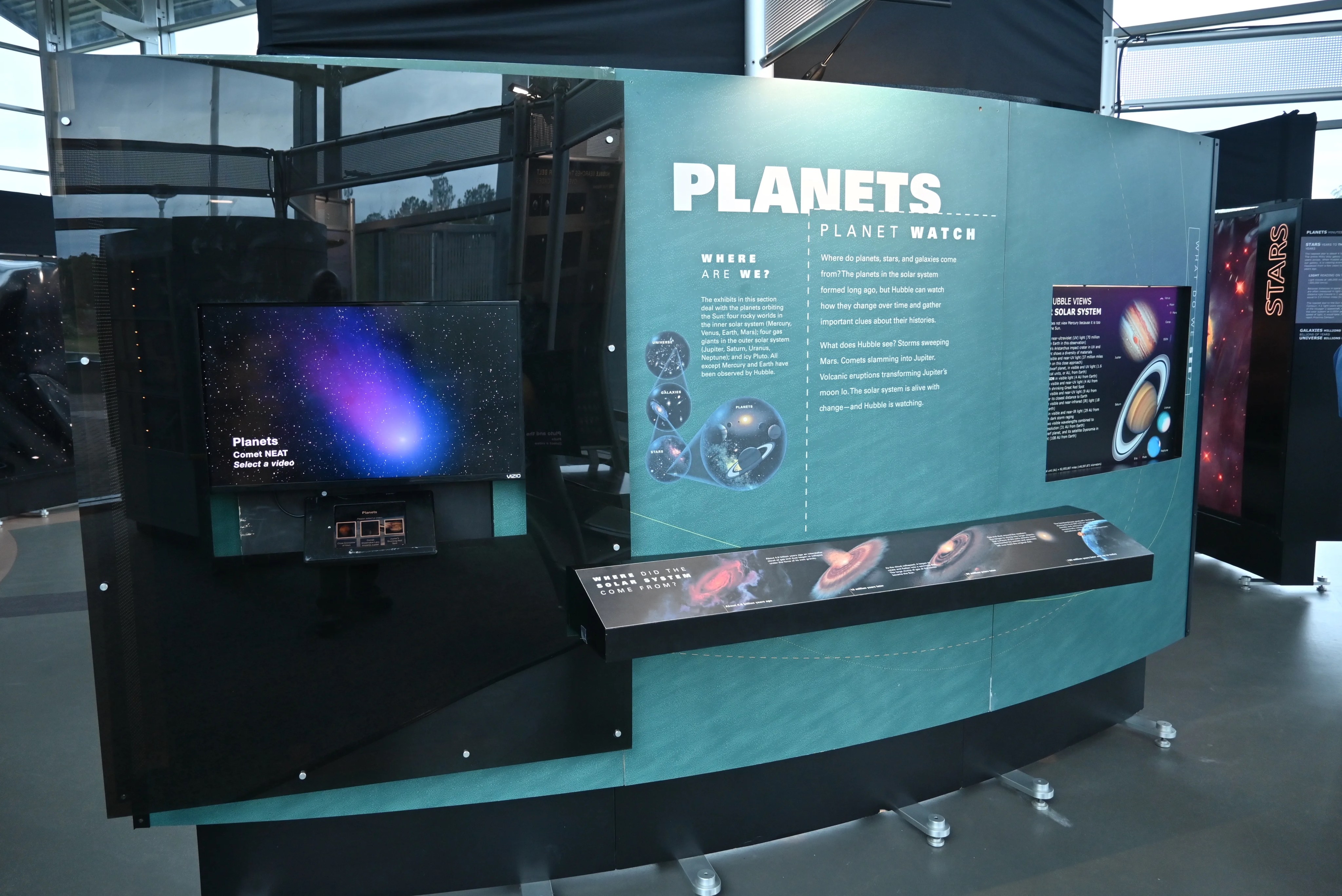
Station 5
Stars
The Stars station of the exhibit includes iconic imagery of the Eagle Nebula taken throughout Hubble’s lifetime. The station focuses on stars in our home galaxy, the Milky Way and includes information on nebulas – clouds of dust and gases that are vigorous hotbeds of star formation. Interactive kiosks take visitors on a tour through the life and death of a star, while a time marker puts time and distances of stars in perspective.
Back to Station List
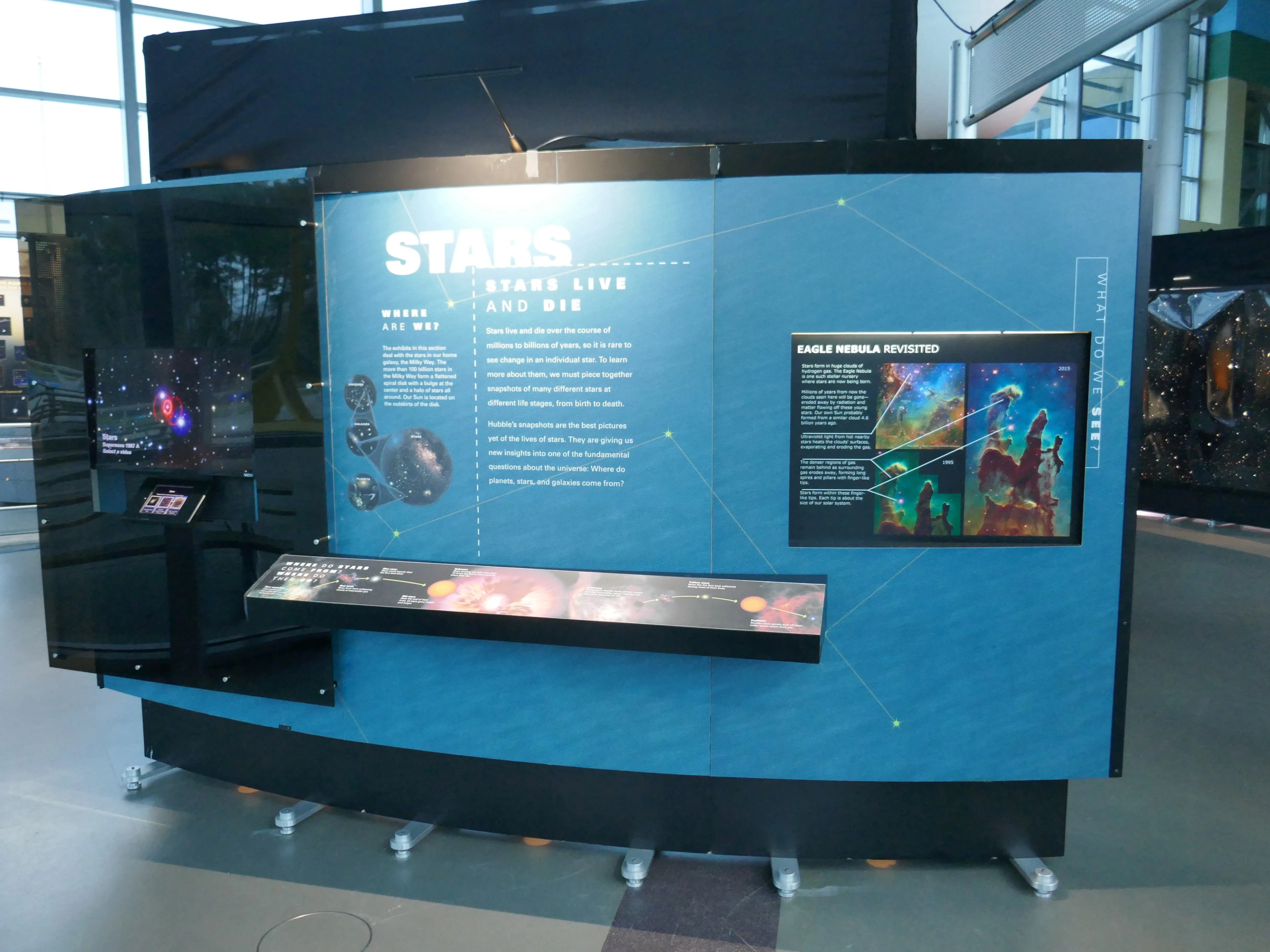
Station 6
Galaxies
Galaxies are enormous systems of stars and gas that fill the universe by the billions. Astronomers have theories of how these galaxies formed, but their many different sizes and shapes suggest that they have vastly different histories. Hubble’s incredible views of galaxies help astronomers answer questions about the universe, whether those questions be about its age, its origin, or its fate. The galaxies wall of the exhibit features Hubble’s anniversary image of the Whirlpool Galaxy (Messier 51 or M51), while the information tower looks at interacting galaxies, determining the age of the universe, and at our neighbor the Andromeda galaxy
Back to Station List
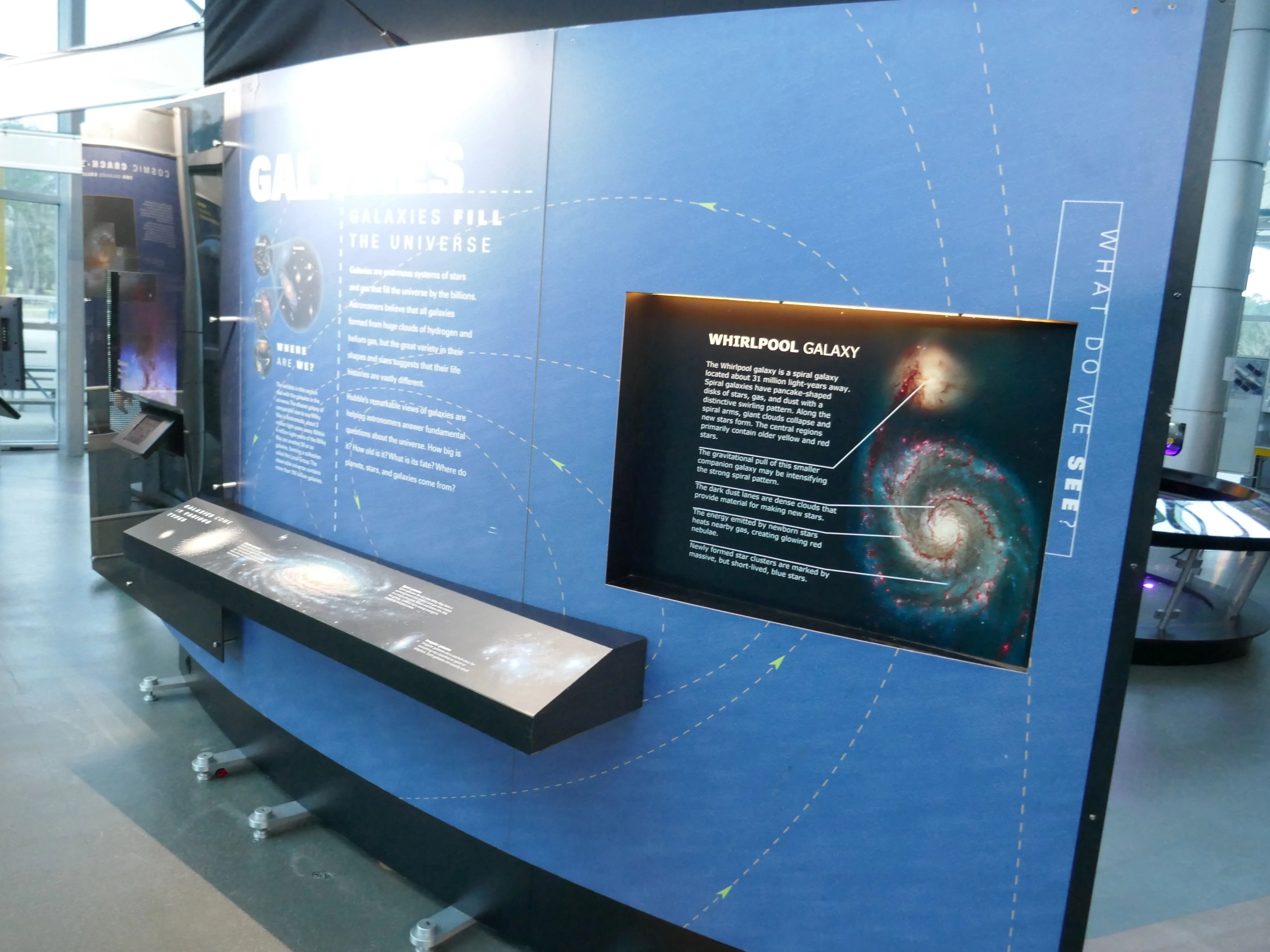
Station 7
Universe
The exhibits in this station deal with the distant universe. The faint light that Hubble detects from this faraway region travelled for billions of years and represents events that occurred when the universe was very young. Hubble’s deepest views are shedding light on some of the most profound questions of all. How does the universe work? Where did we come from? Are we alone? The Universe station’s wall extends cosmology to the farthest reaches of the universe with an image of the Hubble Legacy Field, which contains an estimated 265,000 galaxies. The information tower looks at gravitational lensing – a natural phenomena first predicted by Einstein that uses the warping of space and time to gain insight into the earliest formations in our universe. The multi-spectral kiosk of the Universe station offers visitors hands-on experience with the infrared, visible, and ultraviolet capabilities of the telescope. When the observer puts their hand into the interactive display, they see their hand as Hubble would in each of the three wavelength bands of light Hubble sees.
Back to Station List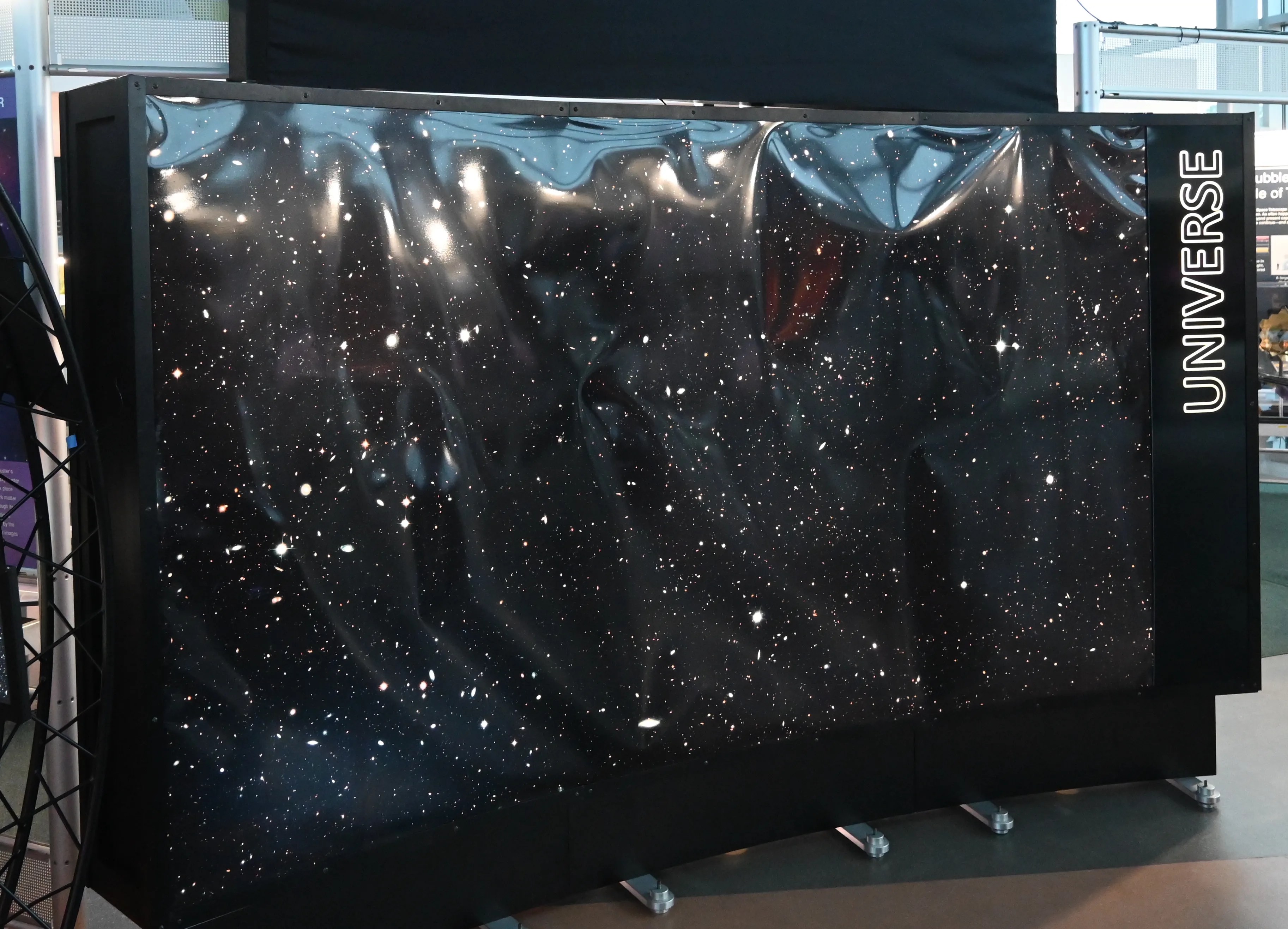
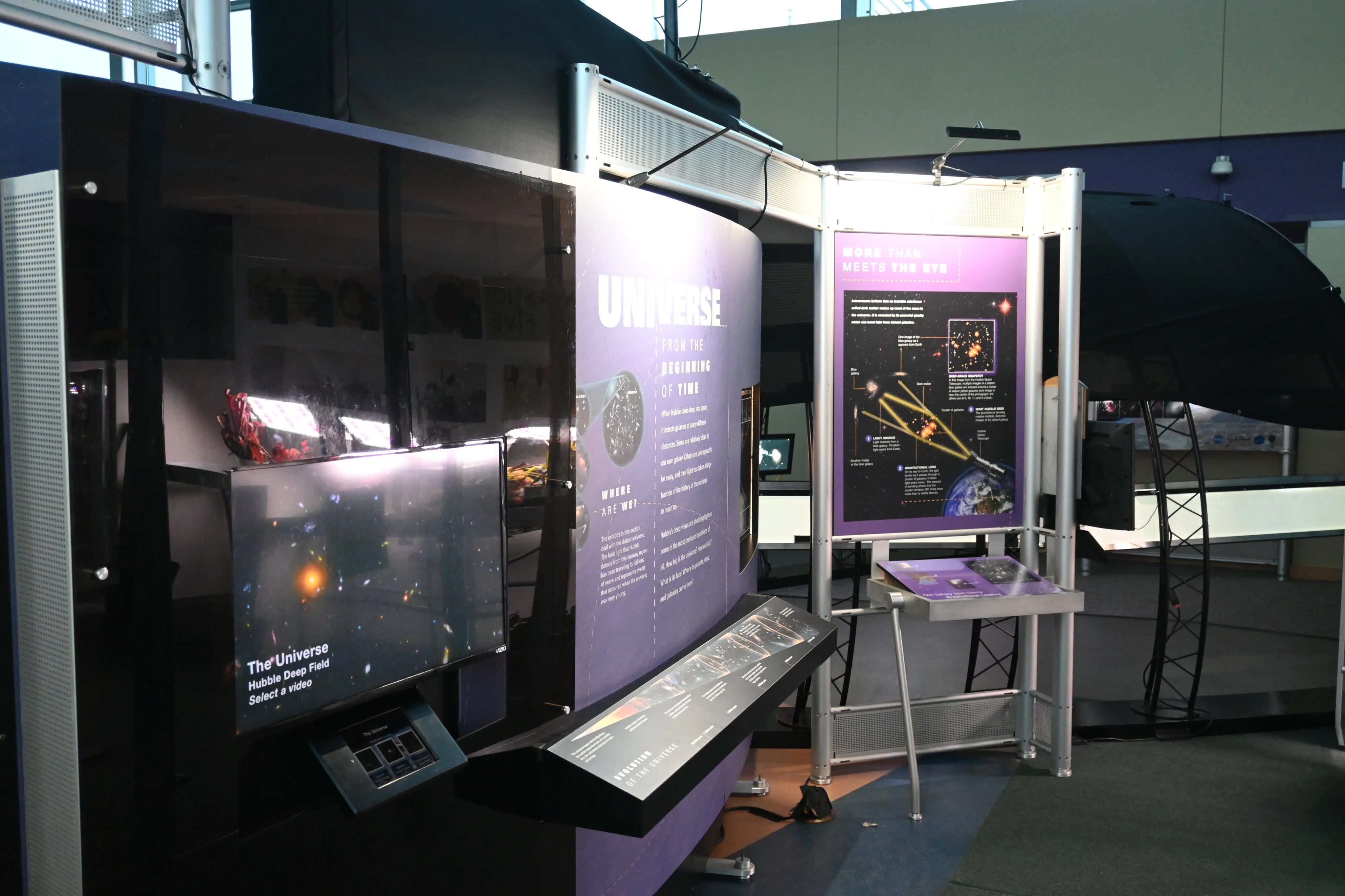
Station 8
Servicing Missions
NASA sent astronauts to Hubble five times to repair the telescope and ensure that it’s working at its best. The servicing missions station highlights each of these five NASA missions, detailing the hurdles Hubble faced and the innovative solutions that astronauts made to overcome them. The station includes displays of some of the tools used by the astronauts on these servicing missions, many of which actually flew into space.
Back to Station List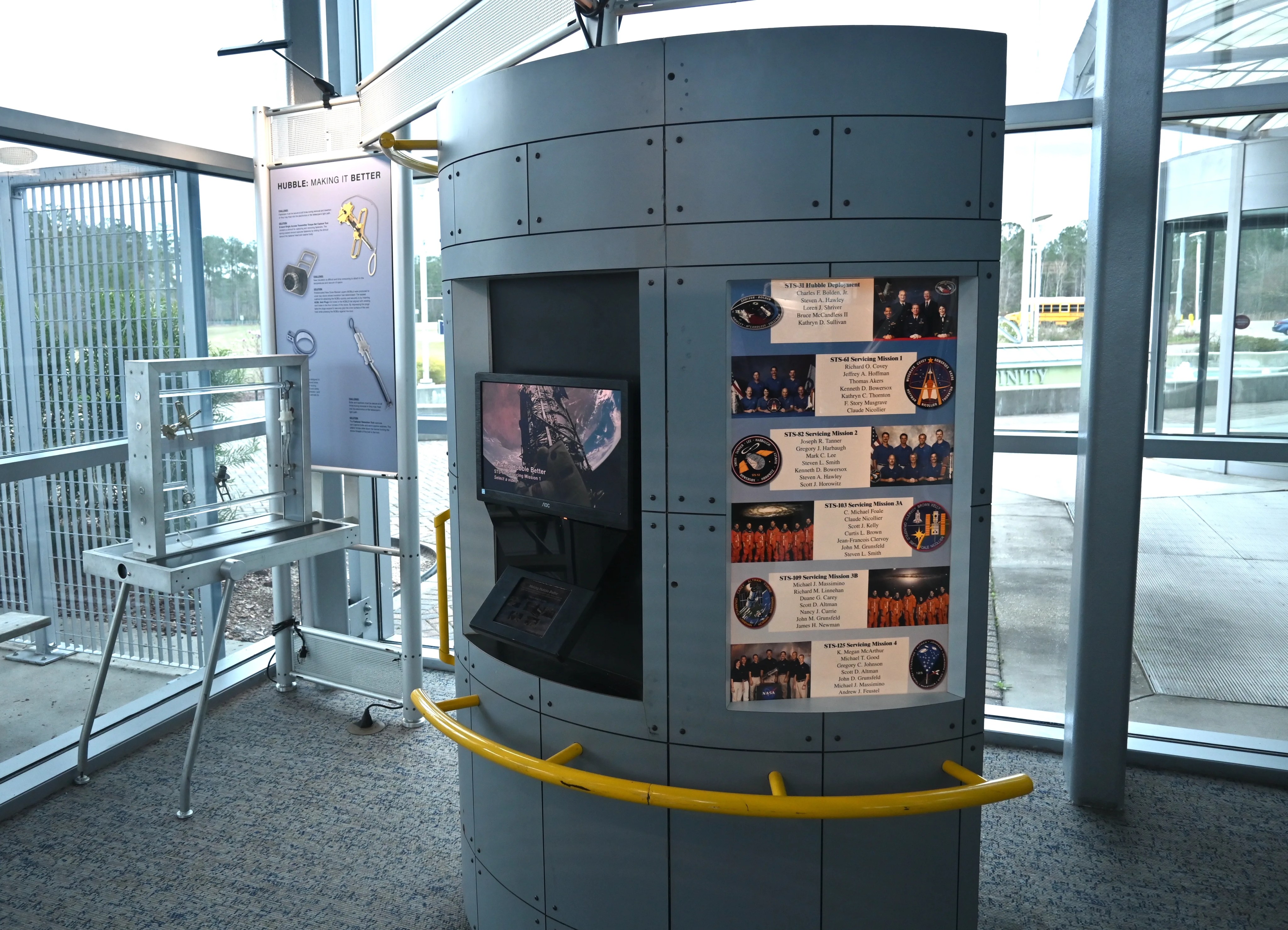
Station 9
The Telescope
The size of a large school bus, Hubble is a complex spacecraft that married satellite technology with advanced telescope and instrument technology. This section of the exhibit provides insight into the optical portions of the telescope, its thermal and power designs, and its overall layout. Included are various artifacts that were returned from space (e.g. a solar panel) or were the backup hardware in case of damage before launch (e.g. the backup secondary mirror).
Back to Station List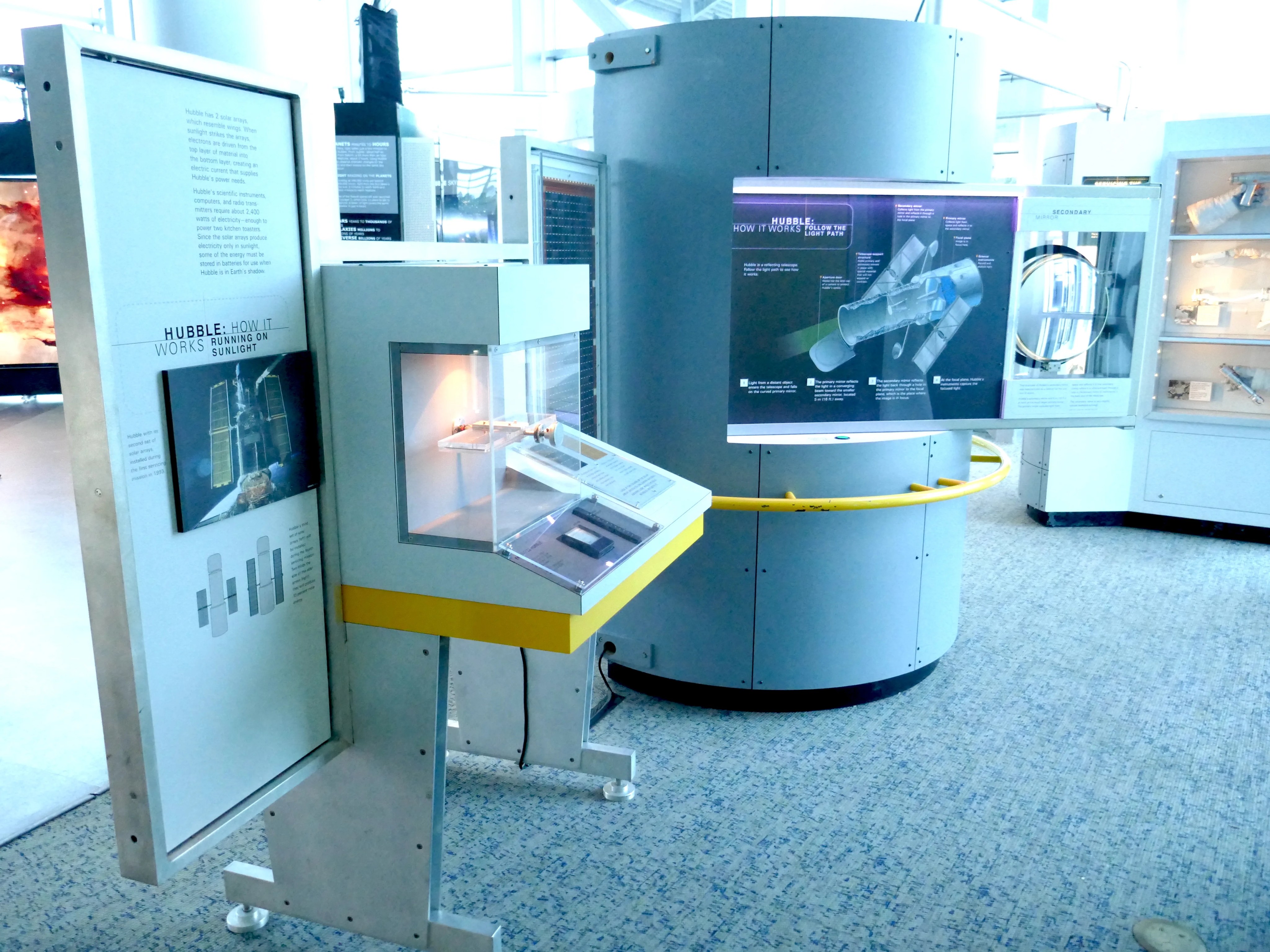
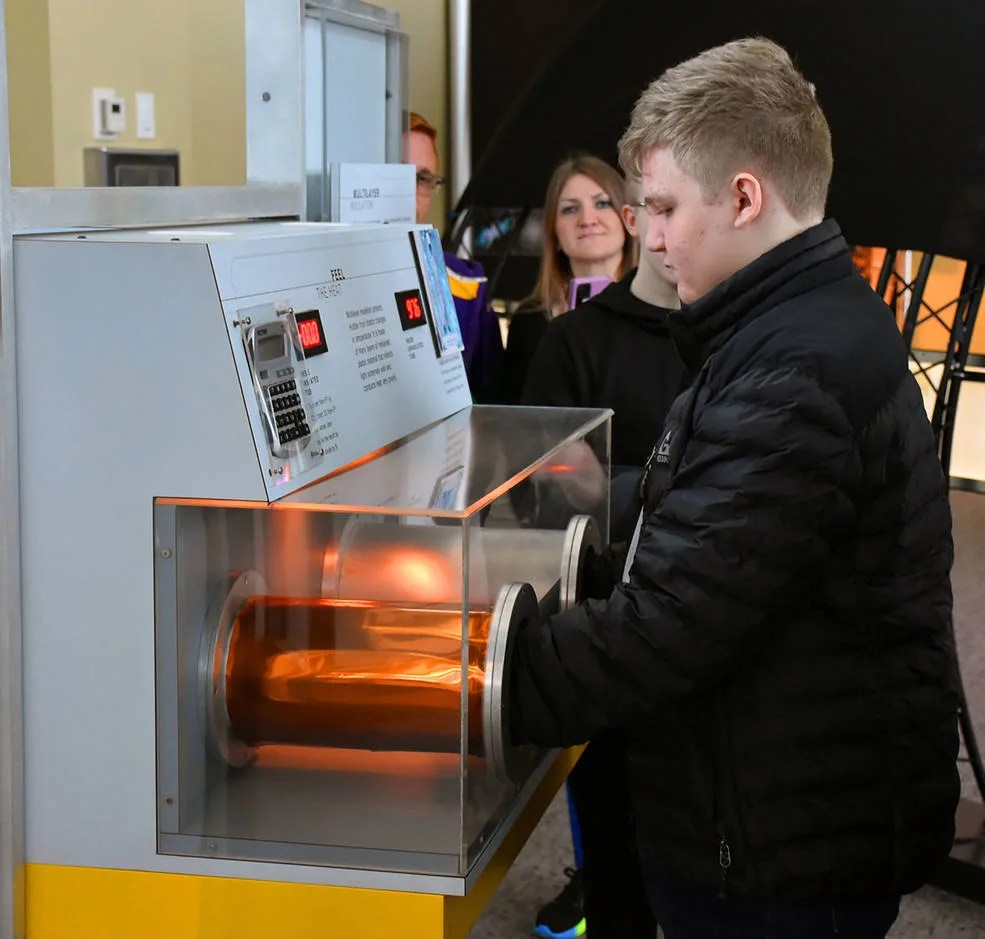
Station 10
Light
The multi-spectral station offers visitors hands-on experience with the infrared, visible, and ultraviolet capabilities of the telescope. When a visitor puts their hand into the interactive display, they see their hand as Hubble would in each of the three wavelength bands of light discernible by the telescope.
Back to Station List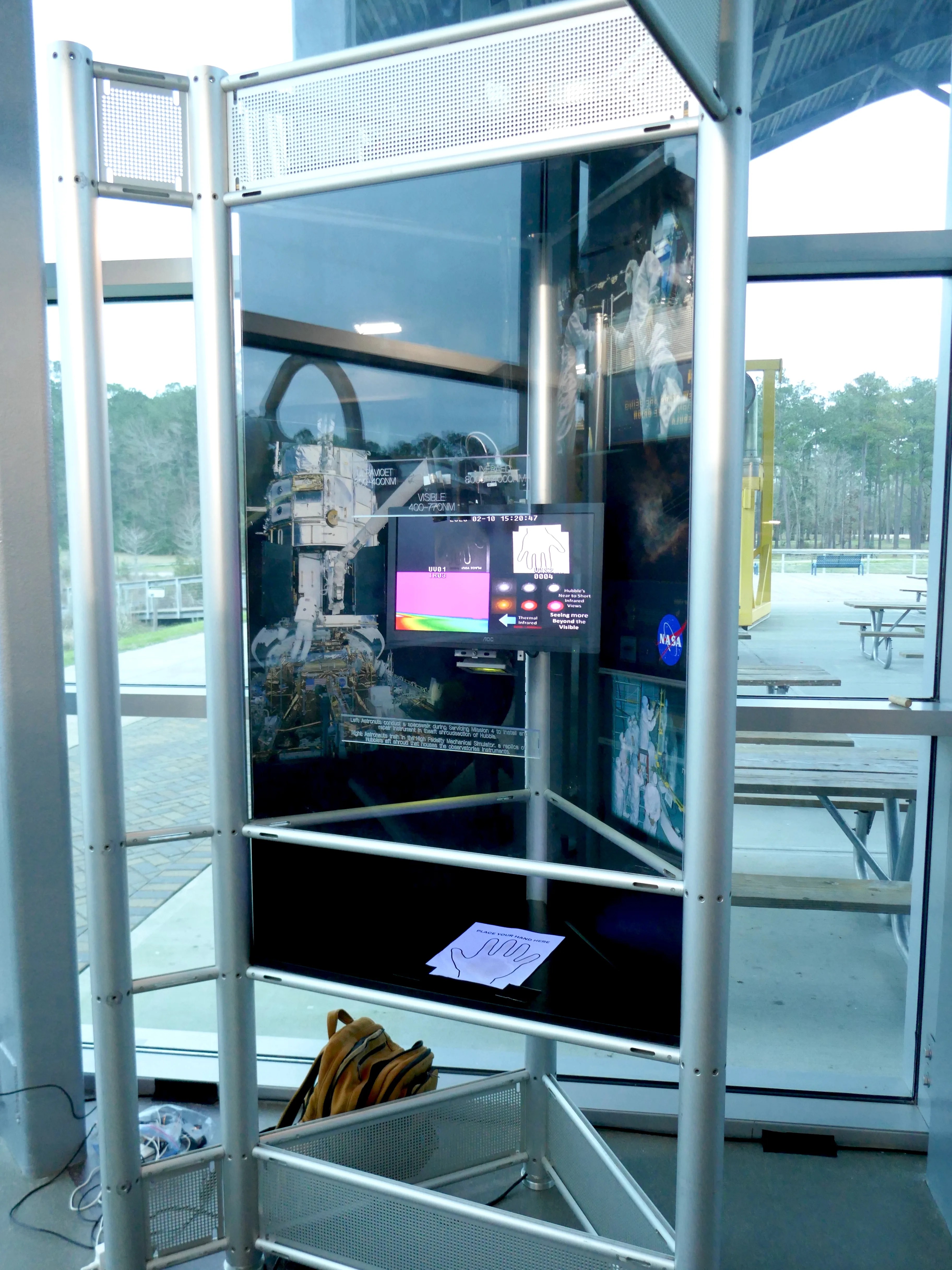
Station 11
Skymap
An interactive Skymap station allows visitors to select objects in the night sky. These objects are categorized by type: galaxies, stars, nebulae, exoplanets, and exotic (e.g., black holes). Once an object is selected, the user is shown a Hubble image of that object (or spectral information in the case of exoplanets) with explanations of what Hubble saw.
Back to Station List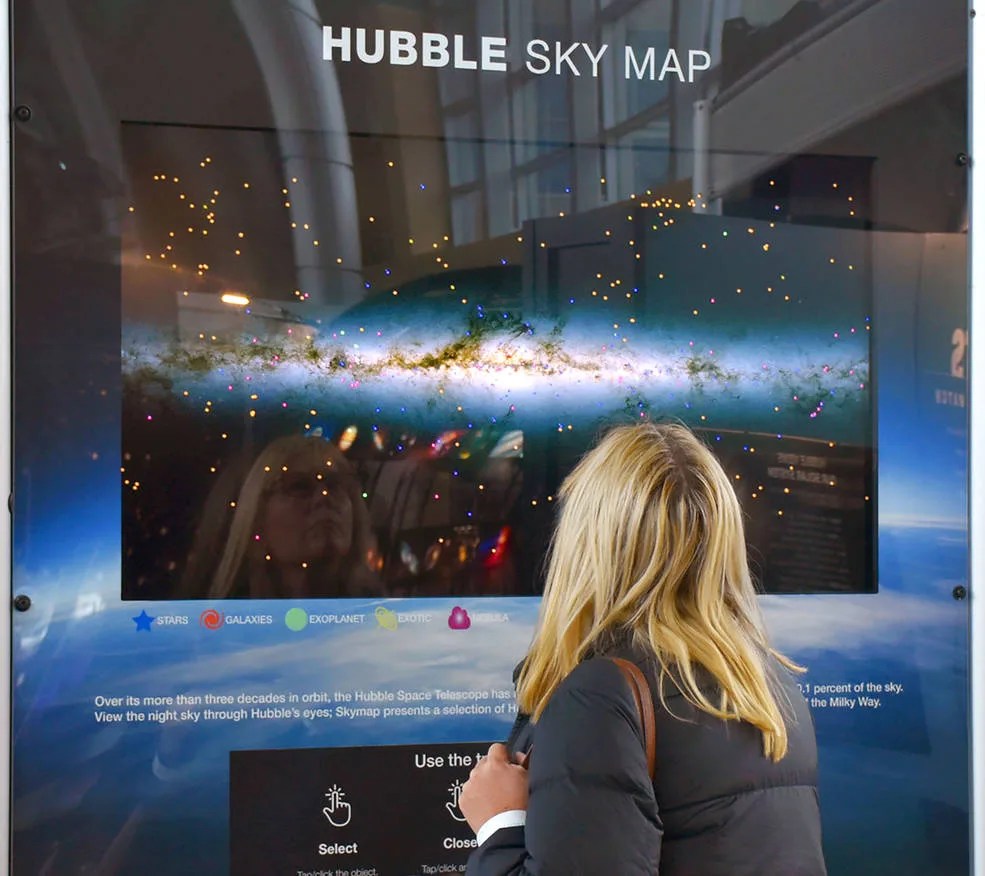
Station 12
James Webb Space Telescope
The James Webb Space Telescope station offers the visitor a peek into the creation and development of the Webb telescope. The station tells a tale of two telescopes: what Hubble can accomplish and what the James Webb Space Telescope has to offer. The station compares the two telescopes and highlights some of the key differences between them. The Webb telescope will focus primarily on the infrared spectrum and will provide us with greater insight into the early universe, while Hubble sees the visible and ultraviolet parts of the spectrum. The station also features some of the new telescopes early images.
Back to Station List